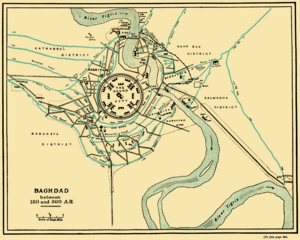
KNOWPIA
WELCOME TO KNOWPIA
Summary
Year 766 (DCCLXVI) was a common year starting on Wednesday (link will display the full calendar) of the Julian calendar, the 766th year of the Common Era (CE) and Anno Domini (AD) designations, the 766th year of the 1st millennium, the 66th year of the 8th century, and the 7th year of the 760s decade. The denomination 766 for this year has been used since the early medieval period, when the Anno Domini calendar era became the prevalent method in Europe for naming years.
| Millennium: | 1st millennium |
|---|---|
| Centuries: | |
| Decades: | |
| Years: |
| Gregorian calendar | 766 DCCLXVI |
| Ab urbe condita | 1519 |
| Armenian calendar | 215 ԹՎ ՄԺԵ |
| Assyrian calendar | 5516 |
| Balinese saka calendar | 687–688 |
| Bengali calendar | 173 |
| Berber calendar | 1716 |
| Buddhist calendar | 1310 |
| Burmese calendar | 128 |
| Byzantine calendar | 6274–6275 |
| Chinese calendar | 乙巳年 (Wood Snake) 3463 or 3256 — to — 丙午年 (Fire Horse) 3464 or 3257 |
| Coptic calendar | 482–483 |
| Discordian calendar | 1932 |
| Ethiopian calendar | 758–759 |
| Hebrew calendar | 4526–4527 |
| Hindu calendars | |
| - Vikram Samvat | 822–823 |
| - Shaka Samvat | 687–688 |
| - Kali Yuga | 3866–3867 |
| Holocene calendar | 10766 |
| Iranian calendar | 144–145 |
| Islamic calendar | 148–149 |
| Japanese calendar | Tenpyō-jingo 2 (天平神護2年) |
| Javanese calendar | 660–661 |
| Julian calendar | 766 DCCLXVI |
| Korean calendar | 3099 |
| Minguo calendar | 1146 before ROC 民前1146年 |
| Nanakshahi calendar | −702 |
| Seleucid era | 1077/1078 AG |
| Thai solar calendar | 1308–1309 |
| Tibetan calendar | 阴木蛇年 (female Wood-Snake) 892 or 511 or −261 — to — 阳火马年 (male Fire-Horse) 893 or 512 or −260 |

Events edit
By place edit
Byzantine Empire edit
- August 25 – Emperor Constantine V publicly humiliates 19 high-ranking officials in the Hippodrome of Constantinople, after discovering a plot against him. He executes the leaders, Constantine Podopagouros and his brother Strategios, and blinds and exiles the rest.[1][2]
- Autumn – Siege of Kamacha: Abbasid forces under al-Hasan ibn Qahtaba are defeated at the fortress city of Kamacha, in eastern Cappadocia (modern Turkey). A Byzantine relief army (12,000 men) forces the Abbasids to retreat into Armenia.
- Sabin, ruler (khagan) of Bulgaria, flees to the Byzantine fortress city of Mesembria, from where he escapes to Constantinople. Constantine V arranges for the transfer of Sabin's family from Bulgaria.
Abbasid Caliphate edit
- Baghdad nears completion as up to 100,000 labourers create a circular city about 1 or 2 km in diameter (depending on the source). In the center of the "Round City" is a palace built for Caliph al-Mansur. The capital is ringed by three lines of walls (approximate date).
Asia edit
- The Karluks defeat the Turgesh Khaganate in Central Asia. Most of Turkestan (former Onoq territory) falls under Karluk rule, except west of Lake Aral, where the loose confederation of the Oghuz Turks is about to emerge.
By topic edit
Religion edit
- Summer – Patriarch Constantine II is deposed and jailed, after the discovery of Constantine Podopagouros' plot against Constantine V. Nicetas I is appointed patriarch of Constantinople.
- Metten Abbey, near the town of Deggendorf (Bavaria), is founded by Gamelbert of Michaelsbuch.
Births edit
- Al-Fadl ibn Yahya al-Barmaki, Muslim governor (d. 808)
- Ali al-Ridha, 8th Shia Imam (d. 818)
- Harun al-Rashid, Muslim caliph (or 763)
- Li Cheng, chancellor of the Tang Dynasty
- Zhang Ji, Chinese scholar and poet (approximate date)
Deaths edit
- March 6 – Chrodegang, Frankish bishop
- August 25
- Constantine Podopagouros, Byzantine official
- Strategios Podopagouros, Byzantine general
- Abdullah al-Aftah, Shī‘ah Imam and Muslim scholar
- Fallomon mac Con Congalt, king of Mide (Ireland)
- Fujiwara no Matate, Japanese nobleman (b. 715)
- Muhammad ibn al-Ash'ath al-Khuza'i, Muslim governor
References edit
- ^ Mango, Cyril; Scott, Roger (1997). The Chronicle of Theophanes Confessor. Byzantine and Near Eastern History, AD 284–813. Oxford, United Kingdom: Oxford University Press. p. 605. ISBN 0-19-822568-7.
- ^ Winkelmann, Friedhelm; Lilie, Ralph-Johannes; et al. (2000). "Gregorios Dekapolites (#2486)". Prosopographie der mittelbyzantinischen Zeit: I. Abteilung (641–867), 2. Band: Georgios (#2183) – Leon (#4270) (in German). Walter de Gruyter. p. 531. ISBN 3-11-016672-0.


